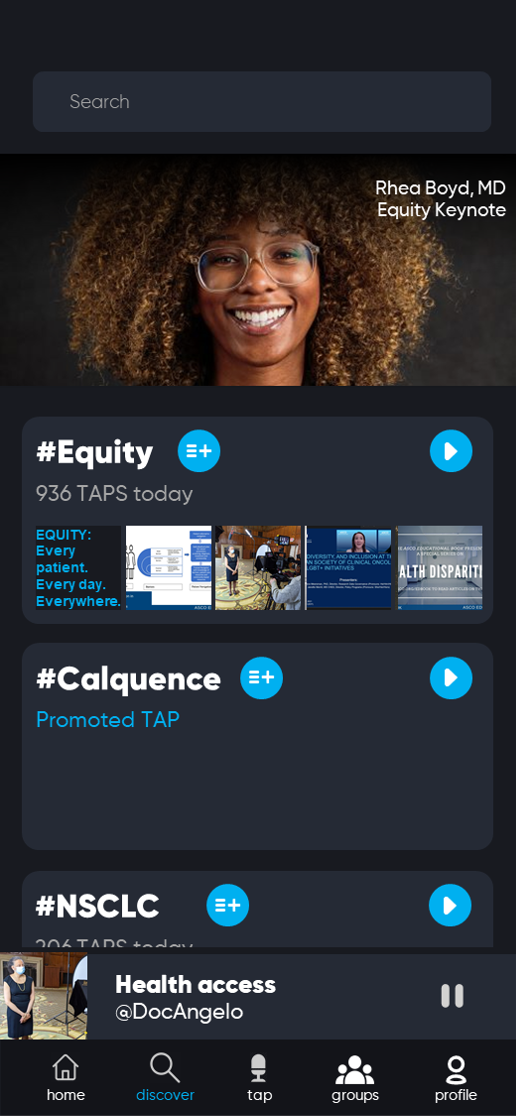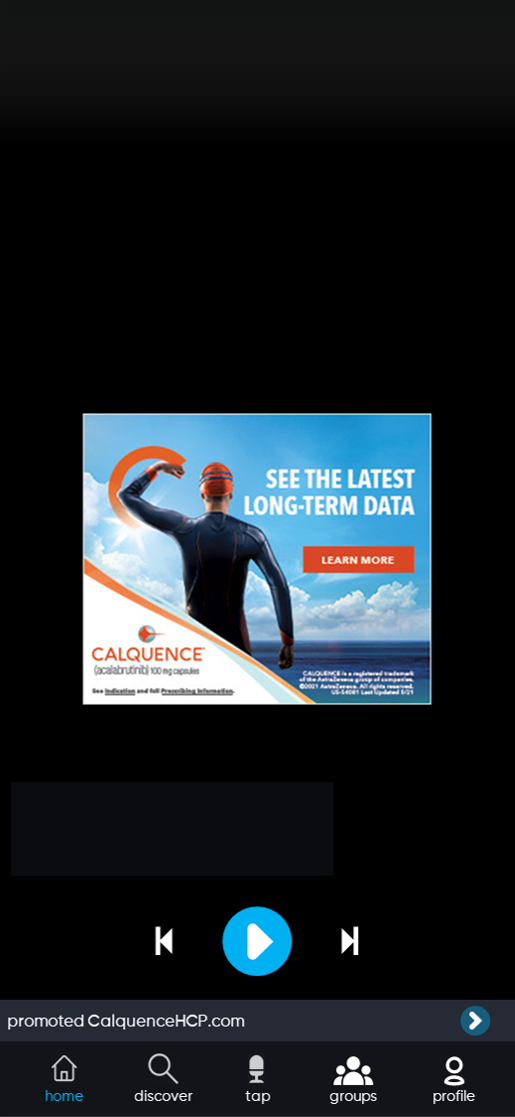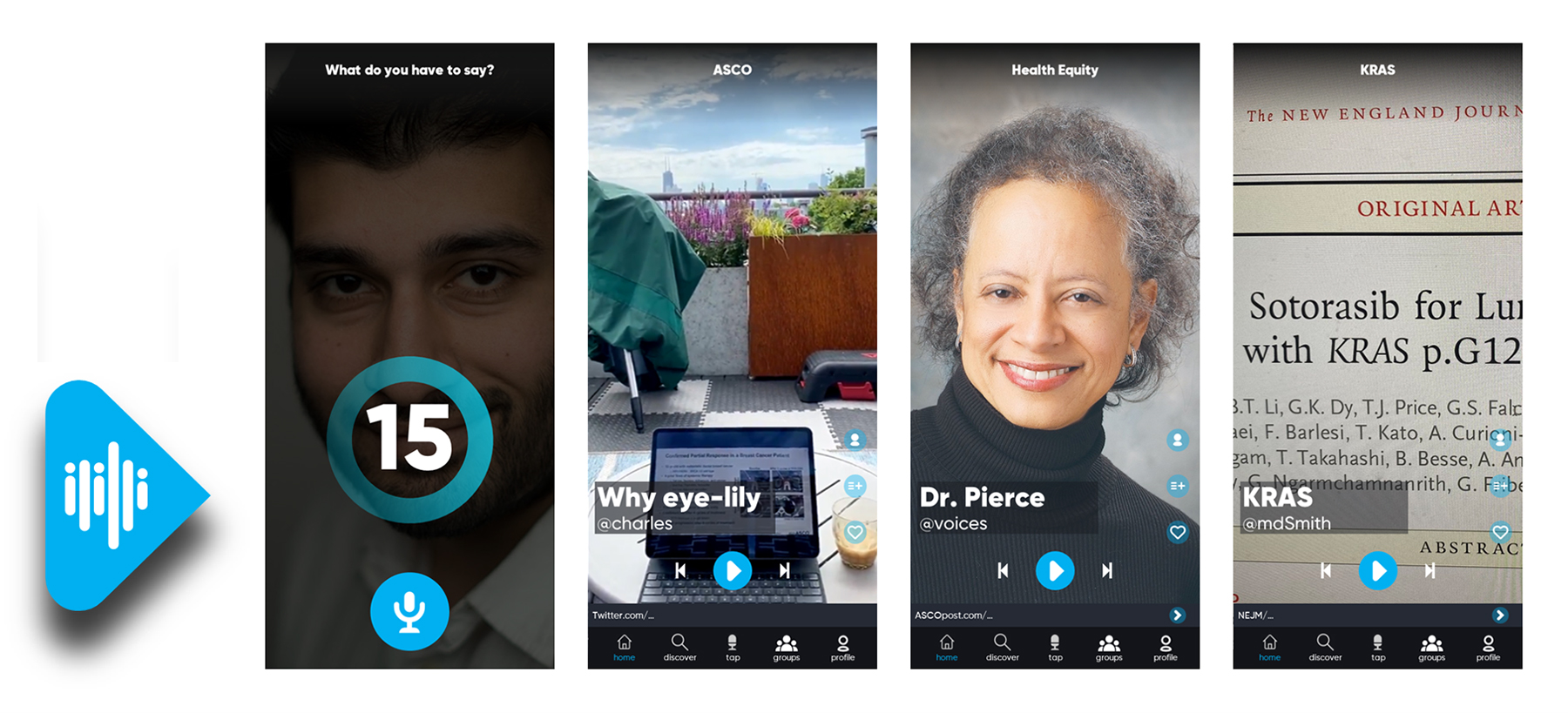Talk is in. Podcasts are exploding. According to Forbes, an estimated 100 million people listened to a podcast in each month during 2020—and that number is expected to reach 125 million in 2022. Additionally, the drop-in audio social media platform Clubhouse went from a startup with 1,500 users in May 2020 to 10 million users by March 2021. But, even with this growth, does “social talk” truly exist? Is there really an audio-based social media platform ideal for anyone and everyone to share their thoughts, opinions, presentations, or anything else, especially one that is geared for the healthcare and life sciences industries?
Charles Benaiah, CEO at watzan, didn’t think so, but his company saw the need to develop such a platform. So, they created ililli, a new platform that allows users to voice record a tiny audio post—or TAP—from a phone and deliver it to a community of listeners. Each TAP can be a maximum of 15-seconds and be paired with an image or link so that people, brands, publishers, and podcasters can use ililli to say what’s on their mind and talk about their work. TAPs can also be categorized into channels, similar to hashtags, so topics can be easily discovered and then listened to as a feed.
Benaiah debuted ililli at this year’s virtual ASCO, and PM360 spoke with him about the new platform, how early adopters plan to use it, its impact during ASCO, and what potential it holds for pharma marketers.
PM360: Why did you see the need for this in the social space?
Charles Benaiah: What made us think about audio was seeing the boom that was going on in that media format with podcasts and Clubhouse. However, we realized that while talking is terrific, it’s kind of an elitist thing to be able to talk to people. Most people don’t have the time or the equipment to be able to produce a podcast. And with Clubhouse, it is invite-only and even if you’re invited there is a very select few who are able to host a chat. It kind of relegates a lot of us to just being listeners, so we looked at social and thought, “What would talk look like if it were really social?”
For us, there were two parts to that. One is you’ve got to compress the amount of time someone could talk—like the way that Twitter took blogging down to microblogging—and make it something that someone could do easily, quickly, and spontaneously from their phone. That was how the production side had to change, and then we realized the consumption side had to change as well. Social media right now is visual. You watch a video, you read some text, you look at a picture, and you tell the system you’re ready for more by scrolling down, but audio is nothing like that. If you’re on Spotify or some other streaming service, it just streams. It knows what you want to listen to, creates a playlist, and then it just plays for you. So we wanted to make a listening type of platform that was easy and continuous to hear, and that’s what we tried to build with ililli.
 I know you wanted to keep the soundbites short, but why limit only to 15 seconds? Why not 20, 25, 30?
I know you wanted to keep the soundbites short, but why limit only to 15 seconds? Why not 20, 25, 30?
We were looking to answer that exact question that you just asked, “Is it 12? Is it 15? Is it 20?” and so we did a few things. One is that we were reading anything we could find about what the optimal length of audio would be, and there’s an article that came from Fortune that basically broke it down in almost scientific terms. It said, “If you want to engage an audience with a presentation, the first 15 seconds is the part that matters.” That was number one.
Two, the average length of videos posted to TikTok is 16 seconds. Three, we went back into the archives of great audio clips such as, “Do you believe in miracles?” or “I have a dream,” or “One small step for mankind.” We went through about 60 or 80 of these similar iconic clips and realized that all of them fit in that same 15-second category. While we can’t all be as eloquent as Martin Luther King Jr., we figured that was enough time to say something meaningful but not so long that it becomes a chore.
In terms of content, is this open to anyone? Or is it focused on healthcare and life sciences?
Our MO since the earliest days of watzan has been, “What do we see that’s really trending in the general media world, and how do we bring that type of innovation to the healthcare market?” So we decided to launch it here in the medical world because we’ve got an audience of doctors who use our products already, but this platform has got potential beyond the medical borders. I think this could be one of the first places where media innovation that happens in healthcare can go outside of healthcare. For example, in the past a company saw what LinkedIn was doing, and so they made a LinkedIn for doctors or they saw how McDonald’s does advertising journey maps, and so marketers in our industry started to build that into the advertising platform for their brands. Pharma is typically on the later end of innovation, at least as media innovation goes, but I think we can take a lead role here, which could be really cool.
Why did you decide to include the ability to upload images with a TAP when this is designed to be more of an audio platform?
The ad agency CMI wrote up a pretty voluminous point of view on the burgeoning audio market and they talked specifically about Clubhouse and how one of its real limitations was that you couldn’t display anything. They used an example in which a fashion designer came out and started talking about her designs, but you could only hear what she was talking about without the ability to see her designs because Clubhouse doesn’t give you a place to put your images.
We thought that was a major problem. We also thought about how on TikTok you can’t easily put links into your posts. So we borrowed a little bit from Twitter, which has always called themselves microblogging, although people don’t talk about them that way. Even though the text in your post is the featured part, you can still add a picture or a link which are also really important. From our perspective, the audio component of ililli is the place where you narrate what you want to talk about, but you’re driving people back to see what you’re talking about either through an image or even a link out of our platform and into yours.
I know this kind of defeats the purpose, but is there any thought to then adding brief videos as well that people can narrate over? Especially in terms of medical content, where it might be nice to have an animation to display certain stuff.
We ultimately decided that if you’ve got a static picture, it’s not detracting from the audio. But, once you start to put video there, then it becomes an awful lot more like TikTok. We also spoke with a few senior executives in the radio world, who of course might be a little bias, but offered an interesting example of how images can complement audio. Say you are driving down the road and you hear an ad to go to your local Ford dealer and at the same time you see a billboard for a Mustang. Suddenly you are thinking, “Mustang. Go to my Ford dealer. Mustang, go to my Ford dealer.”
One of the people we spoke to said, “The value of radio is wonderful. Combining radio with this incredible static billboard amplifies its potential X-fold. Don’t waste your screen space. Don’t pretend you’re Spotify or Clubhouse and assume that people should be putting the phone in their pocket. Give them a reason to look at the screen, but don’t overwhelm the audio content because that’s the value.” So, at least for now, we’ve decided we’re going to stick with static pictures. We might, on some limited basis, allow video from time to time, but that right now is a little antithetical for us.
In terms of streaming, if someone starts listening in their car to the ACSO channel, for example, what happens when they reach the end of the TAPs for that channel? Will it redirect them into another channel or just stop playing?
What we’ve done is added what we call a “discover feed,” which is where you land if you do run out of TAPs. That feed is going to be our best of the best stuff, such as the TAPs with the most “Likes” or where people have the most followers, so typical algorithmic stuff. But the hope is that if there are enough people using it then you won’t necessary run out of TAPs in your chosen channel. Going back to ASCO for a moment, Twitter last year had tweets from 50,000 different people or something like that. So even if we are one-tenth as active as Twitter once we get up to scale, you would be talking about something like 5,000 TAPs. If the average one is 10 seconds, you could probably drive from New York to Boston and hear everything you wanted to about ASCO, and may not run out.
Getting into this year’s ASCO, what kind of reaction or response have you seen from your soft launch during the conference?
We talked to a number of medical publishers who have told us that they plan to be on ililli in the near future and want to start to do two things: talk about the stories that are being published and figure out ways to use this as a platform to keep their audience listening between episodes of their podcasts. From their perspective, and this is the word that they used, “This is easy.”
We also have a couple of different pharma companies that are excited about what this could mean potentially. One we are already working with is AstraZeneca. They put ads on the platform for Calquence and Imfinzi that ran during ASCO. The click-through rate for those first-ever talking ads—talkies—was 18.1%. That compares to an industry average of 0.1%. In fairness, it was a limited pilot that went to broad audience. But, it’s shockingly strong affirmation that giving a brand a unique place to tell their story is going to be a BIG deal.
 Building off of that, on the pharma marketer side what other opportunities are available for marketers outside of those talking ads?
Building off of that, on the pharma marketer side what other opportunities are available for marketers outside of those talking ads?
I think there are going to be some different things, and even with those talking ads there are different ways to utilize those. For example, AstraZeneca used completely different voiceovers for the Calquence and Imfinzi ads. When we were working with the client, we went through multiple audio versions, so we had female voices, we had male voices, we had British voices, American voices, all sorts of things, so they had plenty of different opportunities to choose different audio to accompany the banner part of their ad.
They even suggested it would be great if the ad ran with completely different audio every time. I think we could be seeing some of that, which is an interesting advanced kind of A/B testing. Companies could choose to get voiceovers from a few different KOLs or even patient advocates and pair them with various static assets and see which combinations perform the best.
Another example is we’ve talked to a couple of different companies about how they could use this with localized services. For example, ASCO is a virtual meeting again for the second year in a row, and doctors are attending from everywhere. What could be interesting is if you have a large MSL force or sales force, and you recognize that Dr. Smith is viewing content about ASCO from California. Then you might have a TAP or ad in which a MSL or rep introduces themselves and says something like, “Hey, if you’ve got a question about our product, I’m happy to talk to you about the data and I’m based right in Los Angeles.” It begins to lend itself to a way in which sales reps, MSLs, and everybody else can be on the platform introducing themselves on a promoted basis.
Have any of the people you talked with, pharma, doctors, publishers, etc., surprised you with potential ways they would want to use the platform?
There have been a few things that have come up. We were talking to a peer-reviewed publication’s analytics group, and they wanted the ability to do a few things in terms of audio abstracts, such as allowing the author to do a bit of an asynchronous talking chat after they publish a paper and be able to take questions from people. So, we recently added a capability that lets users reply to TAPs from other users. We’re excited because it enables conversations.
Another thing we’ve been talking with organizations about is the potential to use this for virtual dinner meetings. As they explained, often you will have a doctor sitting at a dinner table and just narrate slide after slide, so this platform could be an interesting way to present that as a feed. Even in just the last three or four weeks as we’ve been explaining what we’re trying to build through ililli, people have come up with some really interesting ideas that never crossed our minds. And we are excited to hear what others may come up and see how people decide to use the platform as more users join.






